The easiest no fail, no-knead sourdough discard bread is mixed together the night before, fermented overnight, and baked in the morning. This recipe has a soft, chewy crumb with a crusty exterior, and that tangy sourdough taste – without all the work.
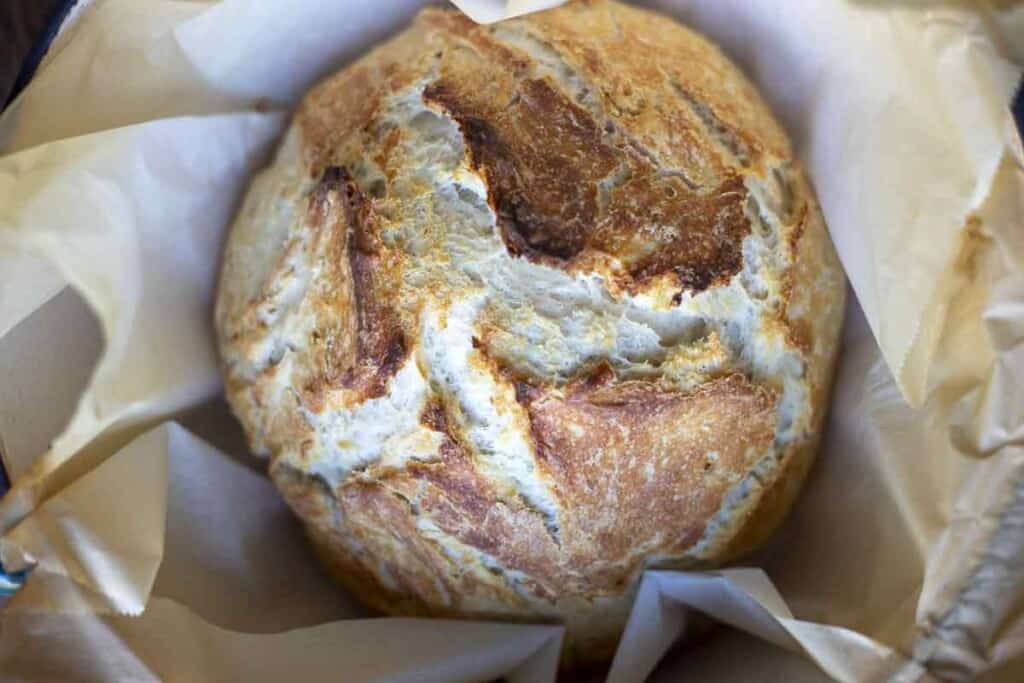
I know, I know, this recipe isn’t a true sourdough bread recipe. While it does contain sourdough discard, it also contains commercial yeast.
This does two things. It makes it a no-fail recipe as the yeast helps the bread rise whether or not your sourdough starter is active enough. Which then, in turn, allows you to forego the kneading (or stretch and folds) in this recipe.
Sourdough discard bread is the perfect way to use up that extra sourdough discard. Serve it alongside soup, your favorite pasta dish, or make a robust sandwich.
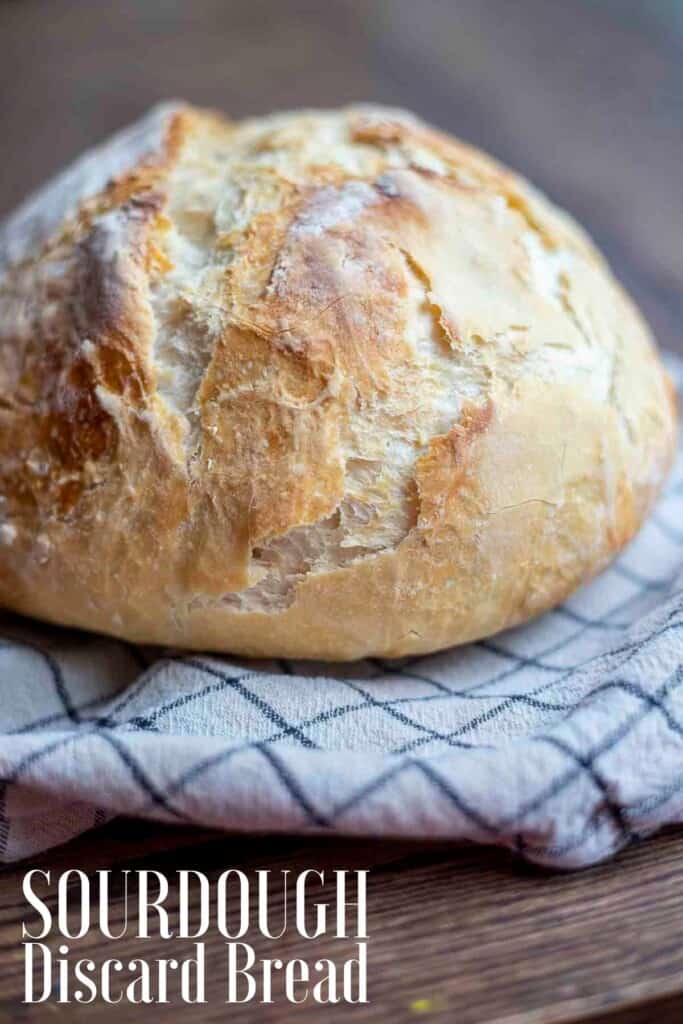
Why you will love this recipe:
Super easy: Mix it up, leave it overnight, shape and bake in the morning. About ten minutes of hands on time allows you to have the yummiest bread.
Delicious: That delicious sourdough tanginess, but without all the kneading and stretching.
Budget friendly: I’m always looking for healthy ways to stretch the grocery budget. This recipe is a great one, especially if you have a super busy schedule.
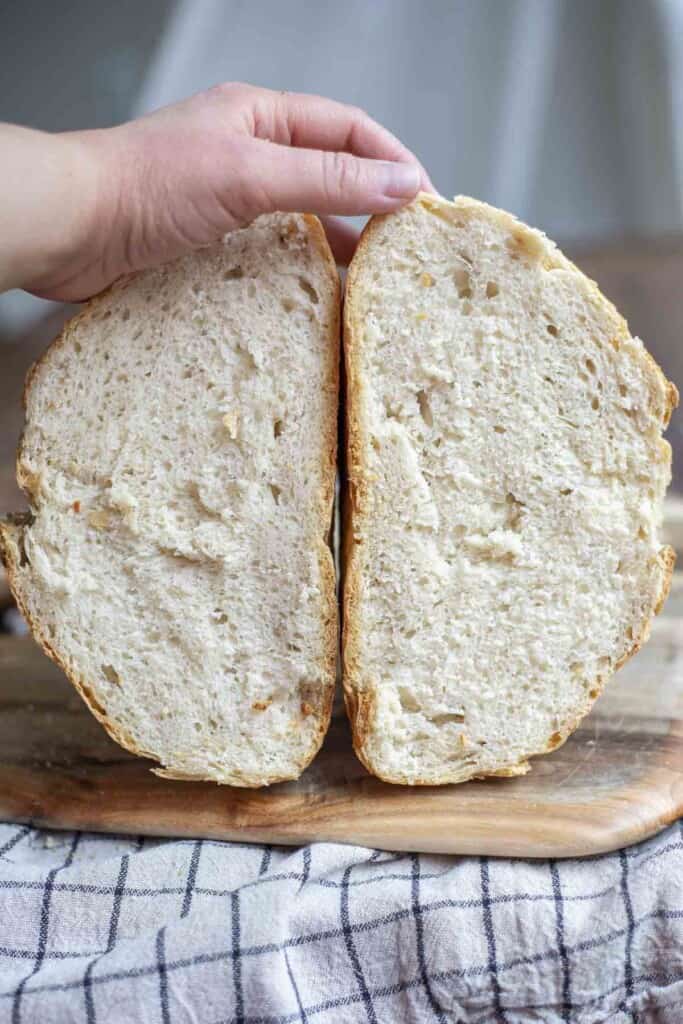
Tips For Making Sourdough Discard Bread:
- To make this bread fluffier and rise better, make sure not to skip adding tension to the dough when shaping. You can easily just plop it onto parchment paper and bake and still get a decent quality loaf, but taking an extra 2-3 minutes to pull the dough edges to the center and then cupping your hand and pulling the dough towards you on the countertop makes a huge difference.
- I like using active dry yeast for this recipe because it can have a slightly slower rise compared to instant yeast.When dissolving the yeast, make sure the water is around 110 degrees. Too hot and you run the risk of killing the yeast.
- To get that crusty exterior, you will need to bake the bread in a dutch oven.
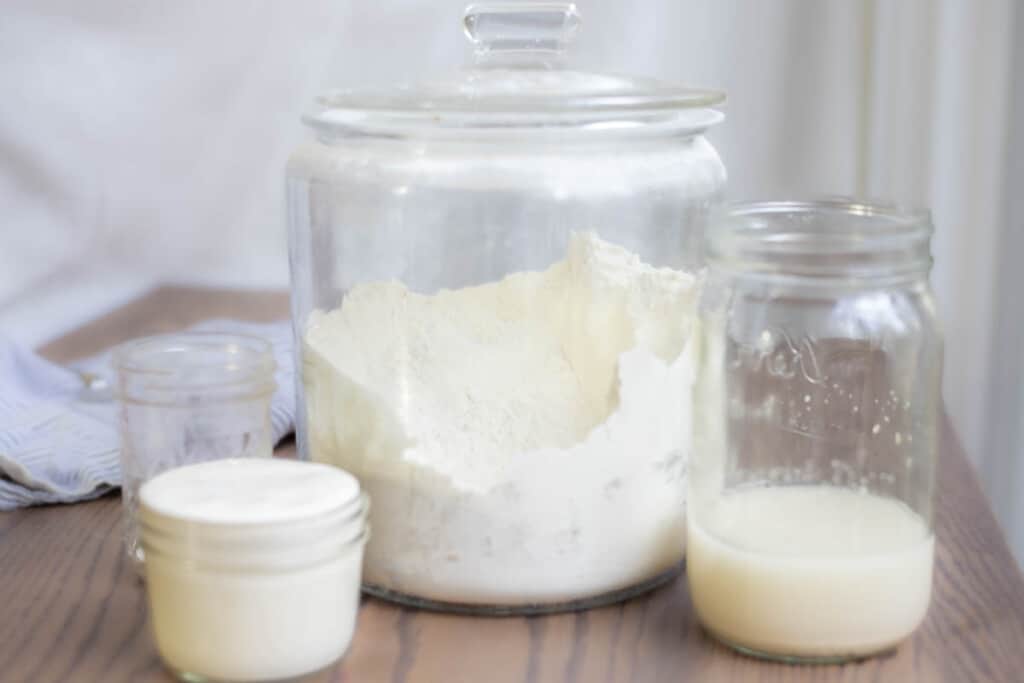
Ingredients:
All-purpose flour: If using freshly milled flour, choose hard, white wheat berries.
Active dry yeast
Sourdough discard: This is sourdough starter that hasn’t been fed in at least 12 hours. It is the portion you would typically just toss before feeding the starter. Active starter could also be used, but you will have a less tangy flavor.
Water: Preferably filtered.
Salt: I use sea salt.
This post contains affiliate links, which means I make a small commission at no extra cost to you. See my full disclosure here.
Tools you will need:
Large spoon or silicon spatula
Parchment paper
FAQ:
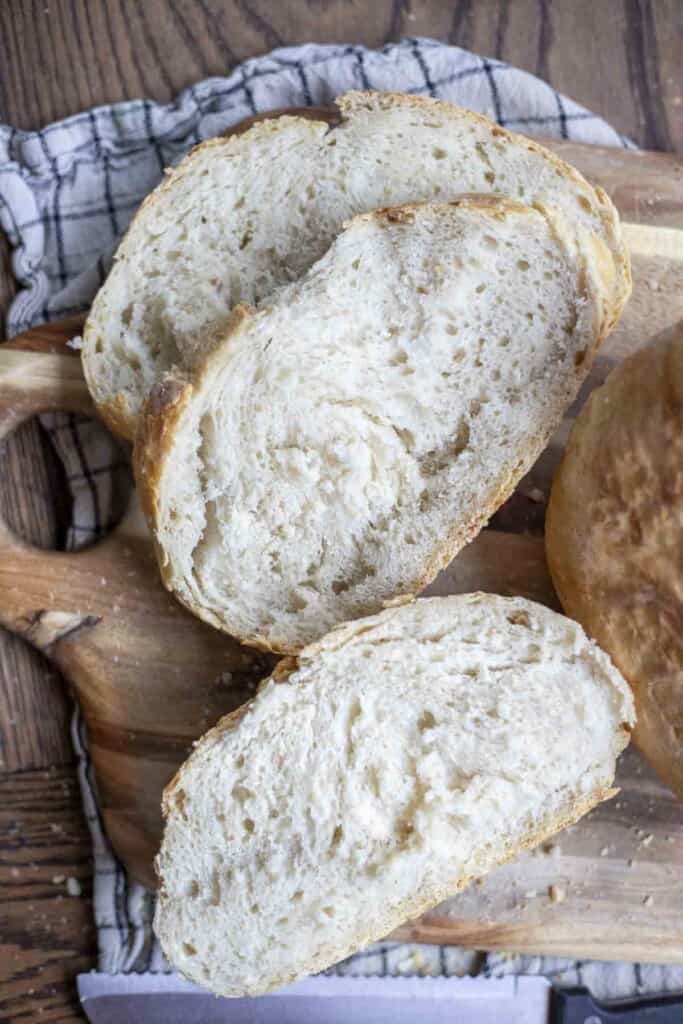
What can I use my sourdough discard for?
Sourdough discard is super versatile and can be used for so many recipes. Some options include muffins, quick breads (like pumpkin, banana, zucchini, etc.) pancakes, waffles, crackers, cakes, and more.
What is the difference between active sourdough and discard?
Active sourdough starter is starter that has been fed water and flour and allowed to sit until it is bubbly and about doubled in size. Sourdough discard is after the starter has peaked, and it has started to come down. It is the portion that you would typically throw away before feeding.
Although, at this point, I never throw away discard because it can be used in so many things.
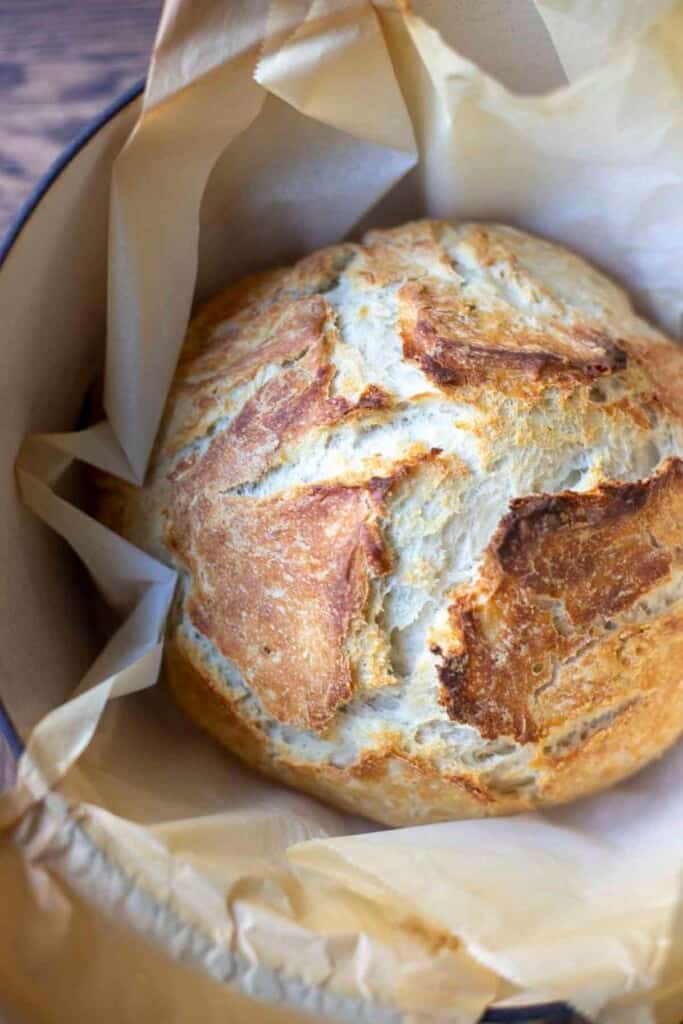
How To Make Sourdough Discard Bread:
Warm water to about 110 degrees. Add active dry yeast and stir. Allow to sit for about five minutes until it gets nice and bubbly.
In a large bowl, whisk together salt and flour.
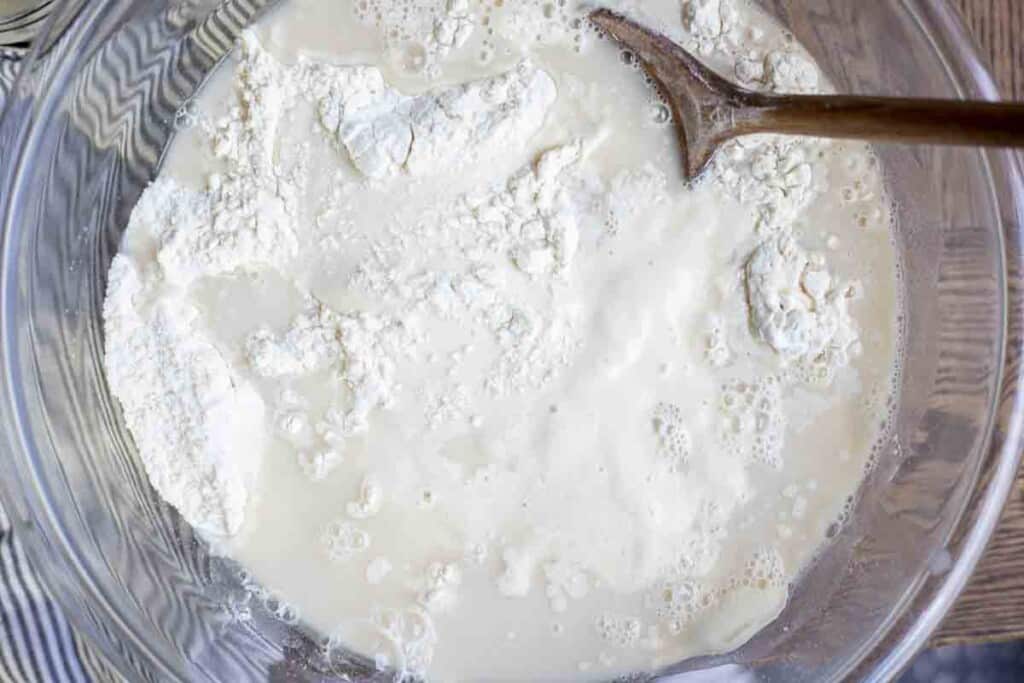
Add sourdough starter and yeast/water mixture.
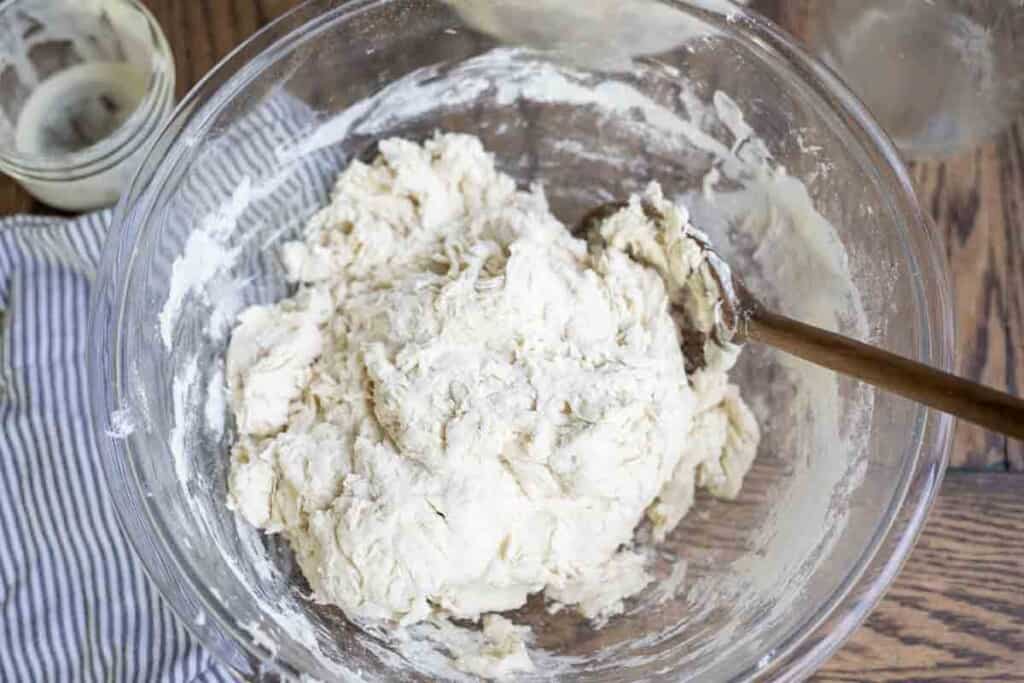
Mix well with a large spoon or silicon spatula. It will be a shaggy dough.
Cover with a lid or plastic wrap and leave at room temperature for around 12 hours.
The next day, preheat the oven to 450. Place your dutch oven and lid into the oven to preheat.
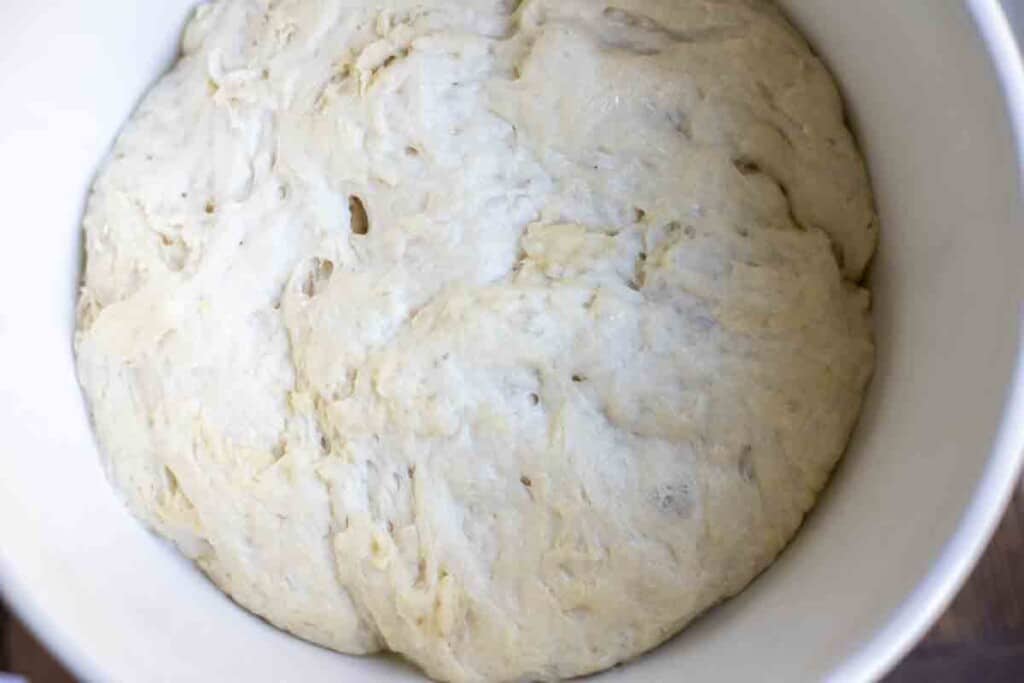
Turn the dough on a lightly floured surface. The dough will be pretty sticky.
Shape into a ball by pulling the sides and bringing them into the center. I do this about 4-6 times. Flip the ball over, seam side down.
Taking your hands, grab the dough and pull it towards you a few times. This adds tension (as does the last step) to the dough, which helps the dough rise more during baking.
Place the dough on parchment paper. Cover with a towel and allow to rise in a warm place for 30 minutes to an hour. The stove top works wonderfully for this as your oven preheats.
Slash with a lame or knife (if desired) and place the parchment paper and dough into the dutch oven and cover with a lid.
Place the dutch oven into the oven and turn the heat down to 400 degrees. Bake with the lid on for 30 minutes, then remove the lid and bake for about 20-30 minutes until golden brown.
Allow to cool completely before slicing. I usually just allow it to cool in the dutch oven.
Storage:
Store uncut bread in a paper or linen bag. Once cut, store cut side down on a cutting board lightly covered or in a storage bag. A zip-lock bag will also work.
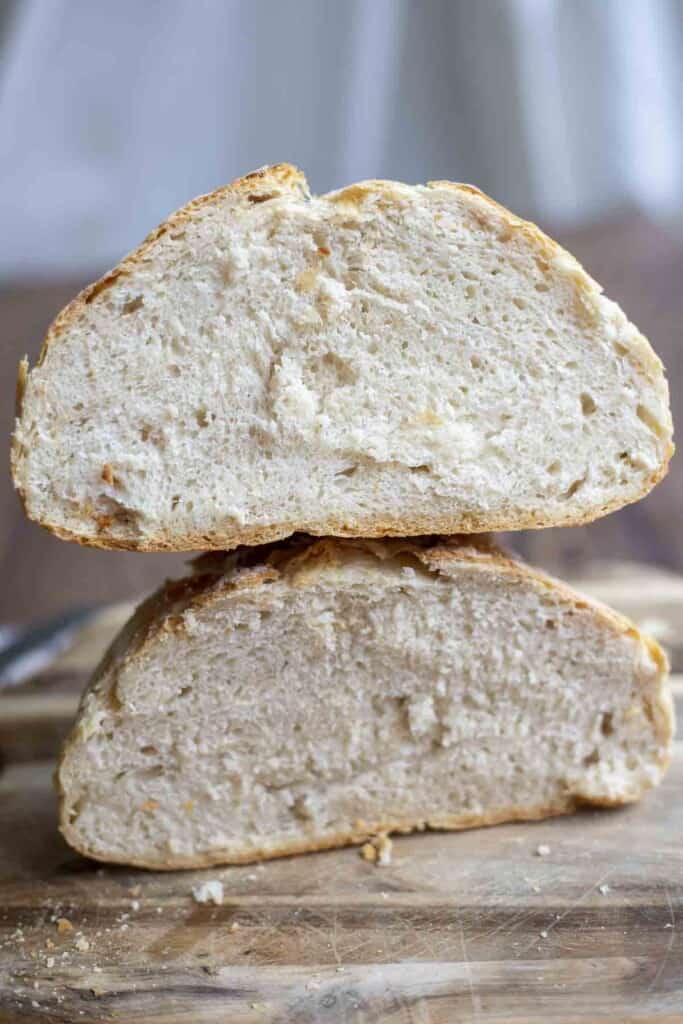
Baker’s Schedule
8 PM: Mix up the dough and cover. Leave at room temperature.
8 AM the next day: Preheat oven with dutch oven and lid inside. Turn dough out onto a lightly floured surface. Shape. Place on parchment paper and cover with a towel for 30 minutes.
9 AM: Bake, then allow to cool before slicing.
Find More Sourdough Recipes:
- Bread Machine Sourdough Bread Recipe
- Spelt Sourdough Bread
- Sourdough Rye Bread
- Sourdough Pumpkin Bread
- Pumpkin Sourdough Bread
If you try this recipe and love it, I would love if you could come back and give it 5 stars!
Sourdough Discard Bread
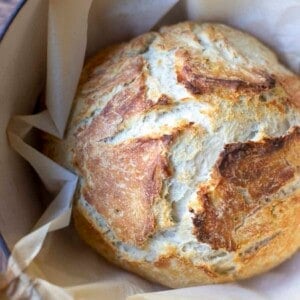
Ingredients
- 1 1/4 cup water, 295g
- 2 1/2 teaspoons yeast or one packet, 7g
- 2 teaspoons salt, 10g
- 1 cup sourdough discard, 255g
- 4 cups all-purpose flour, 575g
Instructions
- Warm water to about 110 degrees. Add active dry yeast and stir. Allow to sit for about five minutes until it gets nice and bubbly.
- In a large bowl, whisk together salt and flour.
- Add sourdough starter and yeast/water mixture.
- Mix well with a large spoon or silicon spatula. It will be a shaggy dough.
- Cover with a lid or plastic wrap and leave at room temperature for around 12 hours.
- The next day, preheat the oven to 450. Place your dutch oven and lid into the oven to preheat.
- Turn the dough on a lightly floured surface. The dough will be pretty sticky.
- Shape into a ball by pulling the sides and bringing them into the center. I do this about 4-6 times. Flip the ball over, seam side down.
- Taking your hands, grab the dough and pull it towards you a few times rotating the dough after each pull. This adds tension (as does the last step) to the dough, which helps the dough rise more during baking.
- Place the dough on parchment paper. Cover with a towel and allow to rise in a warm place for 30 minutes to an hour.
- Slash with a lame or knife (if desired) and place the parchment paper and dough into the dutch oven and cover with a lid.
- Place the dutch oven into the oven and turn the heat down to 400 degrees. Bake with the lid on for 30 minutes, then remove the lid and bake for about 20-30 minutes until golden brown.
- Allow to cool completely before slicing
Notes
- To make this bread fluffier and rise better, make sure not to skip adding tension to the dough when shaping. You can easily just plop it onto parchment paper and bake and still get a decent quality loaf, but taking an extra 2-3 minutes to pull the dough edges to the center and then cupping your hand and pulling the dough towards you on the countertop makes a huge difference.
- I like using active dry yeast for this recipe because it can have a slightly slower rise compared to instant yeast.
- When dissolving the yeast, make sure the water is around 110 degrees. Too hot and you run the risk of killing the yeast.
- To get that crusty exterior, you will need to bake the bread in a dutch oven.
Nutrition
Nutrition information is automatically calculated, so should only be used as an approximation.
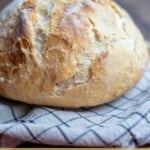
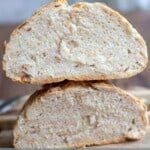
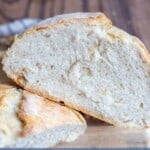
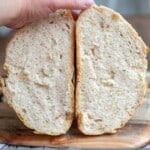

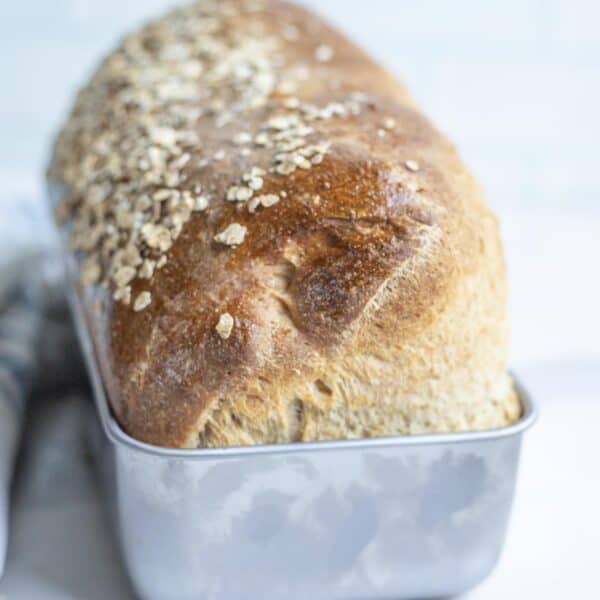
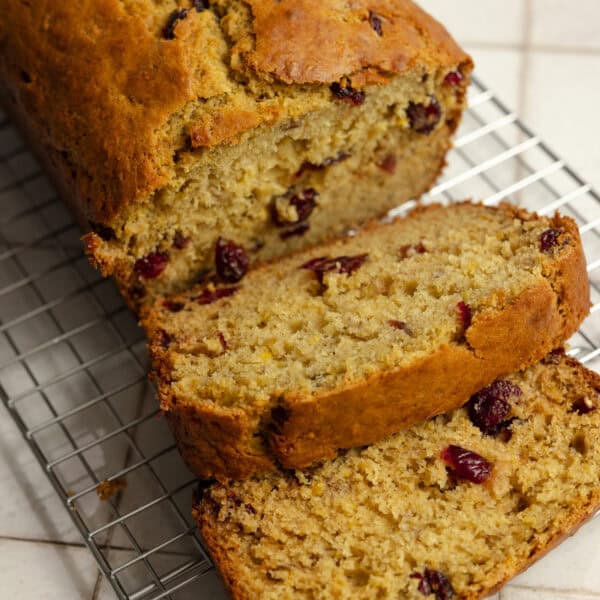
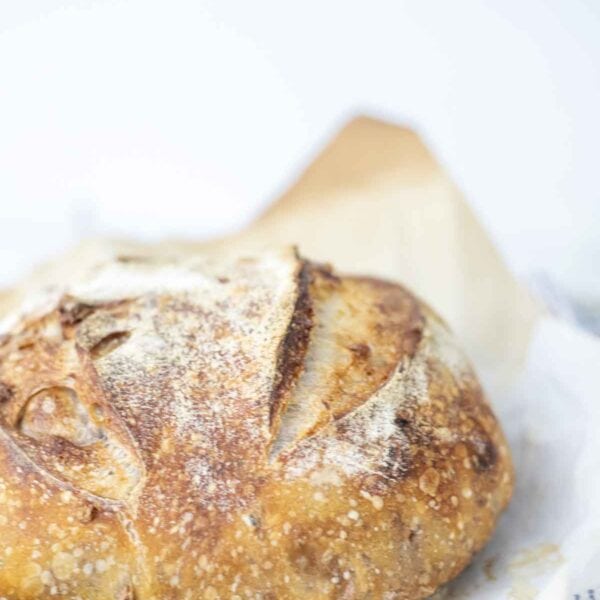
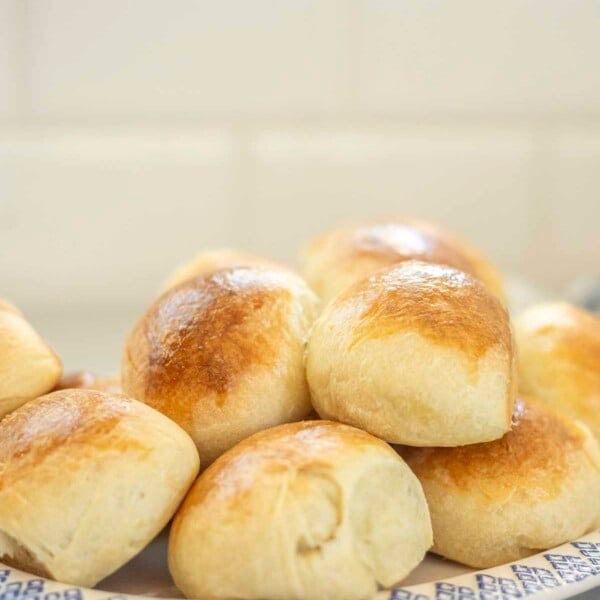






Hi! Is it possible to make this without a dutch oven? How long would you suggest to bake it for in that case?
Here’s a blog I wrote on different ways to bake bread without a dutch oven.
Whoops. Used 2g of instant yeast! Baked after 2 hours and it’s still pretty decent!!!
Uh oh! Glad it still worked out for you.
This is my go-to recipe and truly the reason I love sourdough. It’s such an easy recipe and makes a beginner feel quite proficient at the sourdough skill. Thank you for giving every novice a recipe that will build their confidence in the art of sourdough baking. You’ve made a sourdough addict of me. Thank you, Lisa!!
This is such a great recipe! I’ve made it twice now and I am wondering if you could help answer a question! The first time I made it – I did two loafs, one came out PERFECT! the second one didn’t rise as much, was dense and super gummy. The dough was super sticky as well. Is this because it is over fermented? it sat longer as I had the first loaf in the oven. I also noticed it again when I just made a loaf and it came out delicious! however the dough was more sticky again and it came out gummier than the best loaf I did. Thankyou so much for your help!
This is such a great Recipe thankyou ! I made it last weekend and did two batches. One came out PERFECT! it was amazing. The second loaf – It didn’t rise as much and was a lot denser and gummy. I’m wondering if that would be due to resting longer as my other loaf went in the oven first?
I just made this recipe again and noticed my dough was super sticky again and it came out beautifully but a little gummier than the best loaf. Is my guess right? Is over fermenting causing the gummy texture? thankyou so much:)
It could have been! I’m not sure what would cause that without knowing all of the details. Over fermenting could definitely be a factor.
Turned out perfect on the first try!
Can I leave it for more than 12 hrs? only because it will be 9pm when 12 hrs are up
You can always put it in the fridge until you’re ready to bake! I shy away from too much over 12 hours because you have the possibility to over ferment.
Making this bread tonight for the first time, thank you for sharing the recipe. Just wondering about how to proof in the fridge? I am staying up till midnight so that I can make it tomorrow afternoon around 2 but if it’s ready earlier I won’t be home to know. Can I put it in the fridge in the morning when I get up around 7:30 am. and then take it out around 1 pm. When I get home to finish proofing if ready just bake.
That should work. You can always keep it in the fridge when you want to ferment it longer without the risk of it rising too much and over proofing. However, it still needs time on the counter to achieve the rise for the loaf!
Excellent recipe. Thank you!
Some adaptations I made that may be of interest:
1. Due to differences of temperature the time required may be less that the 12 hours of the recipe. After mixing I put a portion of the dough in a little glass and mark it. When it doubled its size, I knew the whole dough was ready. In my case this was after 7 hours.
2. After step 8 in the recipe (pulling the sides to the center) I stretched the dough 30 times.
3. I left it repose for 20-25 minutes in a warm place before step 9. After step 9 I left it repose for another 20-25 minutes before step 11.
Made a delicious loaf today with this recipe. Thank you!
Happy that you enjoyed it!
Hi,
Can I use a mixture of Bakers flour and rye flour and also can I add some seeds to the mix? Also would I be able to make this in a breadmaker?
Thanks Evie
That should be fine! I have a few recipes that call for seed add ins and a recipe on how to make sourdough in the bread maker!